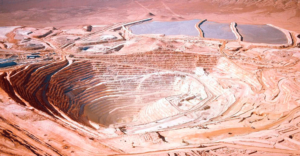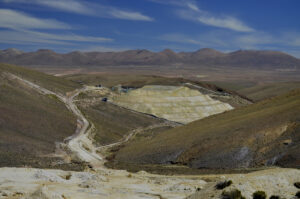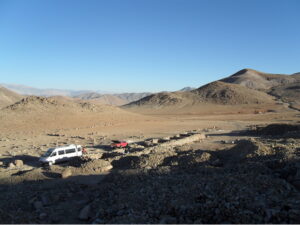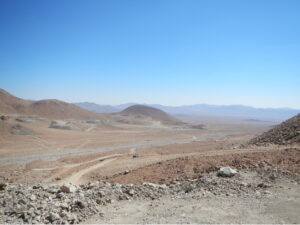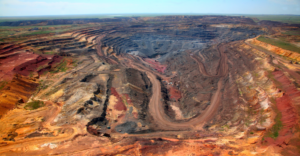
- Burkina Faso | 19 September 2018

Can you elaborate on the economic growth strategy of the Burkina Faso government and the significance of the mining sector in this plan?
Certainly, since 2009, Burkina Faso has experienced steady GDP growth, with the mining industry being a main driver. The share of the extractive industries within Burkina Faso’s GDP has continued to grow, rising from around 4.5% in 2009 to 7.9% in 2015, 8.3% in 2016, and 11.4% in 2017. Moreover, the expected figure for 2018 is above 11.4%. Given this trend, the government aims to make the mining sector an important lever for sustainable socio-economic development in Burkina Faso by 2026. This ambition requires effective implementation of reforms in collaboration with other actors in the sector and in accordance with guiding principles such as state ownership of mineral resources, integration of mines with the rest of the world, partnership, good governance, preservation of the environment, community development, and mainstreaming of themes such as gender, environment, human rights, and health.
To achieve this goal, our department’s strategy focuses on two main orientations. The first is to create favorable conditions for research and the rational and sustainable exploitation of mineral resources. The second orientation aims to increase the benefits of exploiting mineral substances for sustainable development in Burkina Faso. This strategy prioritizes reforms that promote responsible mining practices, such as increasing transparency and accountability in the sector, enhancing community engagement, and fostering local content development.
What have been the major catalysts for the development and growth of the mining sector in Burkina Faso?
The expected figure for gold production in Burkina Faso in 2018 is a record year, and several factors have contributed to the growth and development of the sector. The stability of gold prices has been a significant factor in this trend. In addition, two gold mines, Houndé in the province of Tuy and Netiana in the province of Nahouri, entered into production in 2017. The National Agency of Supervision of Artisanal Exploitation and Semi Mechanized Miners (ANEEMAS) was created in 2015 to better frame the field and channel artisanal production into official collection circuits. According to a study conducted by the National Institute of Statistics and Demography (INSD), artisanal production was estimated at 9.5 tons in 2016. The start of construction of the Wahgnion mine and the start of production of SEMAFO’s Boungou mine have also contributed to the favorable outlook. Finally, the adoption of the 2015 mining code helps to frame the sector by offering investors more leeway to work in a peaceful environment with all the other actors, particularly the administration, the local populations, and the civil society organizations.
What efforts has the government made to organize the artisanal mining sector and mitigate its challenges?
Indeed, a substantial amount of gold is extracted annually by artisanal miners in Burkina Faso, and the sector has undergone significant development with an explosion in the number of artisanal mining sites and gold panning sites. Currently, more than 600 gold washing sites are listed, and more than one million people support themselves through this activity. The artisanal mining of gold has become the second-largest occupation of rural populations after agriculture. However, this trend is accompanied by negative environmental, economic, and social effects.
Can you provide a summary of Burkina Faso’s efforts to diversify its mining sector, and what resources have been identified for exploration and development?
Burkina Faso is known for its gold potential, but the country has other resources to offer, and the diversification of exploitable minerals is a challenge. In order to address this challenge, the country has set three main lines of activity over the 2016 to 2025 period: the development of the research of strategic and energy substances, the monitoring and control of mining activities and infrastructure, and the promotion of careers in exploitation. Research and exploration is ongoing for the development of other mineral resources such as copper and nickel. Quarry substance deposits have also been identified, including more than 500 granite sites, more than 500 clay sites, at least 56 feldspar sites, at least 45 kaolin sites, 22 laterite sites, more than 20 dolomitic limestone sites, one phosphate site and 12 sandstone sites. Precious stones have also been noted.
What has been the main consideration in establishing a balanced Mining Code in Burkina Faso, and has there been any revision since its adoption?
Burkina Faso has had three laws governing the mining sector since the 1990s. The first mining code was adopted in 2003, and the country conducted geological and mining research through the national geological service with support from its technical and financial partners. In 2010, the need to rewrite the 2003 code arose from conflicts arising from the increasing desire of local populations to benefit from mining activity. The code was revised on June 26, 2015, creating several funds, including the Local Development Fund which contributes to the financing of local development plans. The code takes into account the interests of investors, local communities and the state.
What indirect economic benefits has Burkina Faso gained from its mining sector, and what are the main advantages?
Burkina Faso has gained several benefits from its mining sector, including an increase in local investment, the number of direct jobs created, mining revenue and export earnings. In terms of employment, around 2,500 direct jobs were created by the mining industry in 2017, bringing the number to 9,189, against 6,696 in 2016. In terms of artisanal mining, the number of jobs was estimated at over 1.2 million in 2017. Direct impact to the state budget amounted to CFAF 226 billion in 2017 against CFAF 190 billion in 2016 – a growth rate of 19%. From January to May 2018, the contribution of mining companies to the state budget amounted to CFAF 81,859,440,333. As for export earnings related to the mining sector, these rose from CFAF 1,023 billion in 2016 to CFAF 1,308 billion in 2017.
What efforts are being made to develop Burkina Faso’s energy sector and address the challenge of power expenses for mining companies?
Energy is an important expense for all economic actors in Burkina Faso, and the country does not produce oil and is 1,000 km from the supply ports located on the coast. However, efforts are being made to diversify sources of energy supply and increase domestic production. The country is increasing the share of renewable energy in the energy mix, and is encouraging mining companies to develop initiatives to create endogenous production units, preferably in renewable energies such as solar energy, which is a very available resource in Burkina Faso. One example is the hybrid power station set up at the Essakane mine.








